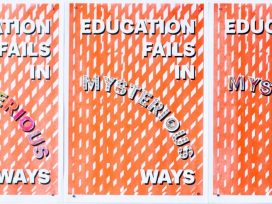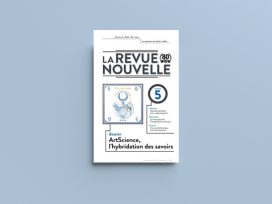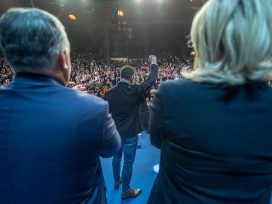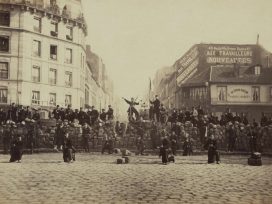“There is a mystery […] in the soul of state.”
William Shakespeare, Troilus and Cressida
Writing about certain subjects is a thankless task, and the editorial board discourages it: too little substance would be offered to arrive at any solid conclusion, and it would too closely resemble yellow journalism when the subject is something which in general practice is dismissed as irrelevant and almost indecent to talk about. What is it that so mysteriously holds the nation together? The tenacious and diverse incestuous connections within society appear to be a point of bizarre homogeneity and a constant about which it does not behoove us to speculate too much. If we were to go on to mention the field of art production: what happens to the artist in an age when one’s last name and social connections are more important than the quality of the artist’s works? Given this “democratic” packaging, is the range of work of any significance whatsoever? Starting from this viewpoint, we can further develop reflections on generations in art.
It is natural to be concerned with the survival of one’s own biological stock; few can refrain from engaging in this sport, hence the dependence on godfathers from birth onwards is a general rule. An opposing position comes across as utopian in its anti-pragmatism. Few people are prepared to depart from a well-established pattern, and allow things to take a different and more difficult course. The human species from ancient Greek mythology on has recognized the controversial relationship between fathers and sons, the Odysseus and Telemachus principle, but what does today’s Telemachus do without the intervention of some Odysseus? The situation is acknowledged to be widespread; in a recent interview, Tone Partljic estimated the percentage of people who rely on such methods at about 90. It is impossible to overlook this premise on the incestuous nature of artists’ circles. The shade of meaning becomes recognizable in the context of comfortable theatre mechanisms. There is no debate on the subject, since on the one hand it is obvious, on the other hand, unchanging, and on yet another, invisible. Comparable to other countries in its scale, the phenomenon is likely to be not at all unique in history.
The point of departure for the Adopt an Artist (AAA) campaign of Jane Flego (b. 1977) and Katarina Petrov (b. 1974) is based on a similar idea: “that an artist trying to establish himself runs up against factors which are beyond his creative competence and on which he has no direct influence”. One external factor which is strongly present in the Slovenian art community but clearly taboo appears to be the so-called genetic factor. The two artists direct their focus towards “the constantly insinuated but never really proven suggestion that artists whose genes affirm a direct or indirect association with established names from the past prosper more quickly and more easily than those lacking such genetic material”. Here it is important to realize that access to gallery space in order to exhibit their works is crucial to raising public visibility of graphic artists. The strictly functional plan of AAA is thus to gather together artists lacking a “pedigree” and include them in their unique adoption program – a person is of interest as a potential “foster parent” only to the extent that he can demonstrate that “the transfer of his genetic factor to the artists (through adoption) will benefit the artist in making himself known”.
The producer of the campaign is Mare Bulc’s organization No history, the same Mare Bulc who supplemented his studies at AGRFT (Academy of Theatre, Radio, Film, and Television) with a parallel self-taught project, No history/Know history!, and who by means of other self-positioning filled in the gaps in a curriculum of what is supposed to be a serious and modern theatre academy. Bulc penetrated the mechanism of the production of art and artists with a conceptual subversion which did not breach the system (for this reason the system also allowed it) but which took up its space within it. Similarly, Jana and Katarina stress that the analysis of “the malignancy and benignancy of the genetic factor” is more about stirring up wider reflection of a taboo topic which bothers them than about igniting radical social change in the prospering of the artistic population. (The project gets by without any PR, thus its subversive note enters the environment in small doses.)
As a story of the path to success, AAA by all means confirms that professional incestuousness as a phenomenon is not invisible. The principle is expressed in a joyful social context of legitimate competition and not in obvious favouritism. In the area of theatre practice it is possible to understand the condition for placement in a compatible team of co-artists (which AAA partly simplifies and limits to the genetic factor; in theatres it is a matter of artistic leaders or directors) more widely: as membership in a particular clan and with this a certain type of mentality. We are speaking of adoption which in exchange includes a sort of adoption of and identification with a planned model of thinking. It is not a firm ideological indoctrination but rather a soft model of formation of a circle of like-minded people, which of course operates in the sphere of art direction.
AAA in its own way shows what Slovenes do “with themselves” (this is, according to Dusan Pirjevec, the only important thing for the future which is opening up to us). The model “each one for himself and his own” is nothing new and it is a part and parcel of developed capitalism, which is allegedly best suited to the Slovene character. In this it is perhaps not good to distance oneself too much from the game and publicly proclaim one’s principles, since it is all too easy to get tripped up and caught out by them oneself.
However inaccessible the terrain of this editorial, we are left with the impression that the author’s views remain at the cosmetic and superficial level. One of the essential characteristics of this phenomenon is that it produces symptoms of its own symptom.






